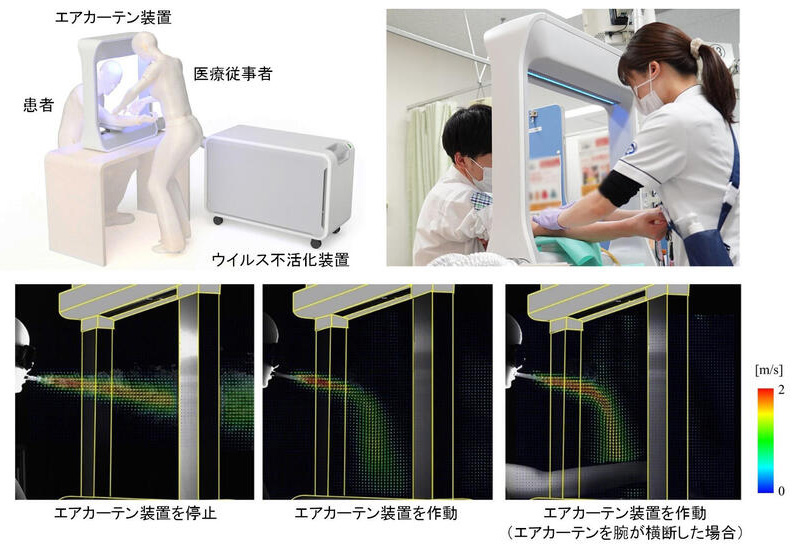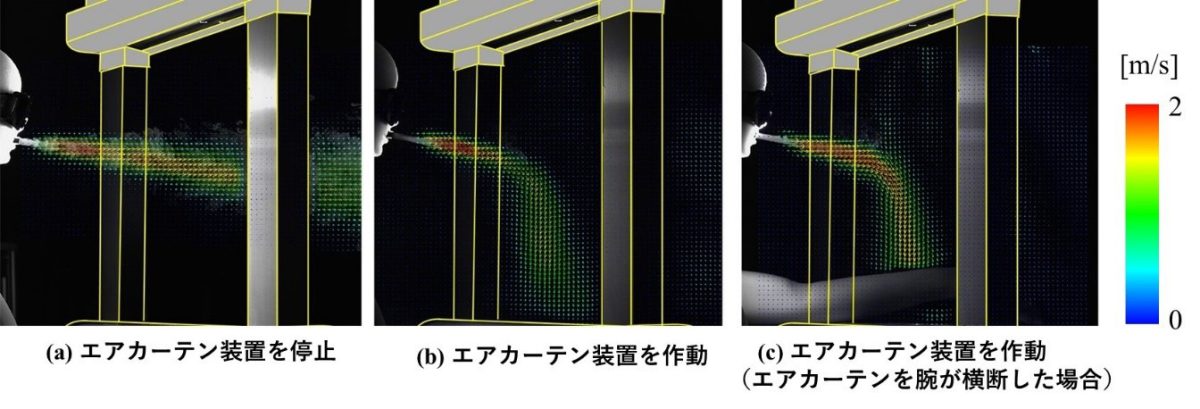
A research group led by Professors Tomomi Uchiyama and Hiroshi Amano of the Institute of Materials and Systems Sustainability, Nagoya University, and Professor Tetsuya Yagi of the Graduate School of Medicine, Nagoya University, has developed desktop air-curtain equipment realizing an inactivation rate of 99.91% for severe acute respiratory syndrome coronavirus 2 (SARS-CoV-2). This equipment was realized in cooperation with the members of Nagoya University Hospital, Nagoya Medical Center, and Apollo Giken Co., Ltd. The fusion of the technologies in medical and engineering fields realized the inactivation of viruses by deep ultraviolet irradiation using light-emitting diodes (LEDs) and the control of air-curtain flow.
It has been shown that social distancing is effective in suppressing the spread of SARS-CoV-2. However, it is difficult to maintain a sufficient distance between patients and medical practitioners in some medical tasks, such as interviews, blood drawing, and treatment procedures. Therefore, the reduction of exposure of medical practitioners to viruses is an urgent and important issue.
The research group has succeeded in developing the desktop air-curtain equipment that can generate an air wall (or air-curtain flow) to block aerosols contained in the expiration from patients even when a sufficient distance cannot be maintained. In addition, the research group succeeded in the development of original virus inactivation equipment that can be used with the desktop air-curtain equipment. The viruses in the air-curtain flow are inactivated by deep ultraviolet irradiation using LEDs. According to the results of experiments carried out at Nagoya Medical Center, a SARS-CoV-2 inactivation rate of 99.91% was achieved.
The virus inactivation equipment can keep the air-curtain flow free of viruses. In addition, LEDs are used for deep ultraviolet irradiation and no filters are required. The equipment is continuously operated for a long period of ≥10,000 h, which is equivalent to the lifetime of LEDs.

図4: 呼気から発するエアロゾルの遮断効果の検証(粒子画像流速測定法による可視化結果)
This study was supported by the tryout-type program of Adaptable and Seamless Technology Transfer Program through Target-driven R&D (A-STEP) of Japan Science and Technology Agency (JST) (FY2021).
Reference
The paper, “Blocking effect of desktop air curtain on aerosols in exhaled breath,” was published in the journal AIP Advances on May 17, 2022 at DOI: 10.1063/5.0086659.
Authors:
Kotaro Takamure, Yasuaki Sakamoto, Yasumasa Iwatani, Hiroshi Amano, and Tomomi Uchiyama
Uchiyama Laboratory
http://www.is.nagoya-u.ac.jp/dep-cs/uchiyama/index.html
NU Research Information
https://www.nagoya-u.ac.jp/researchinfo/result-en/2022/05/20220519-01.html


